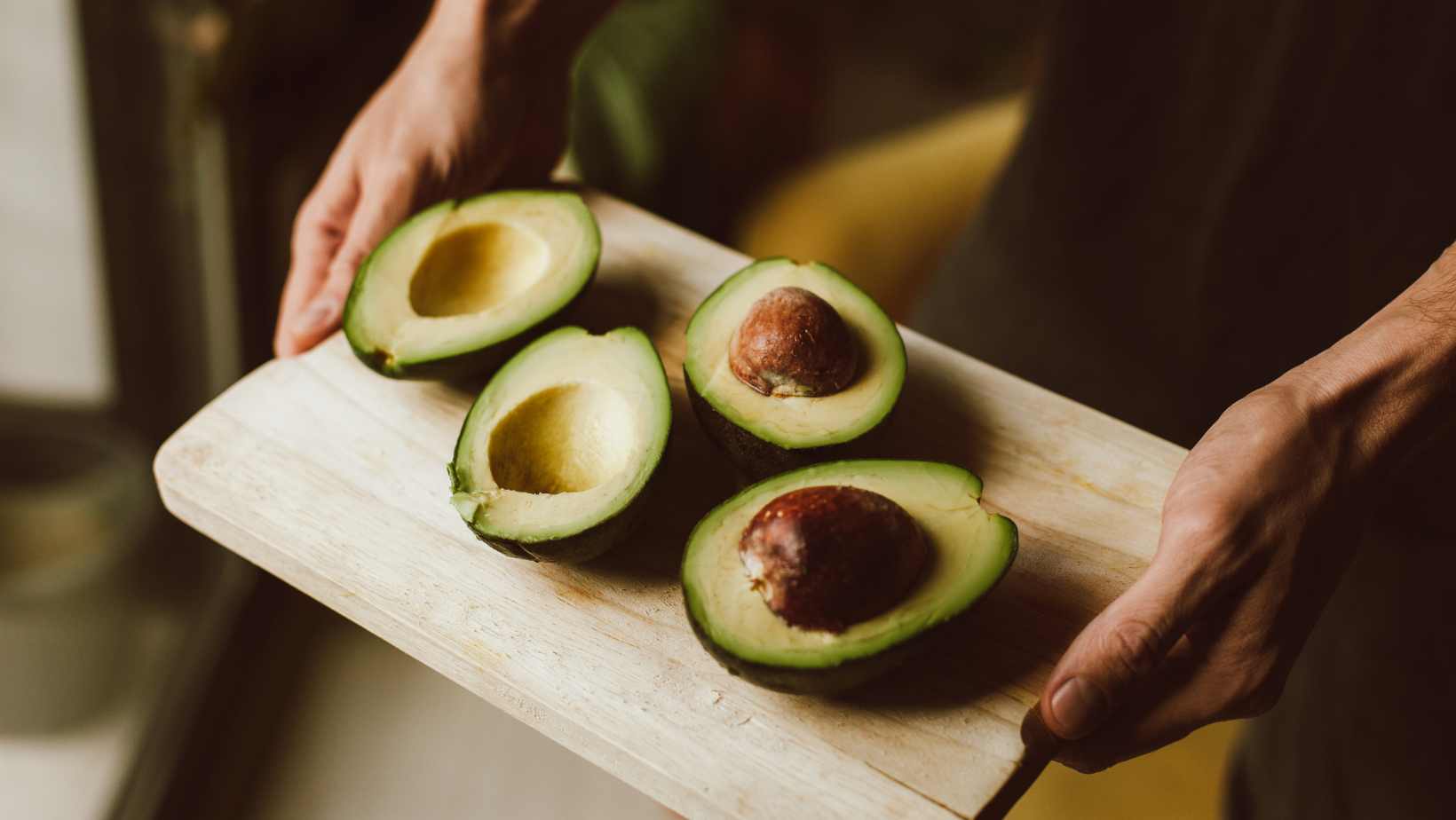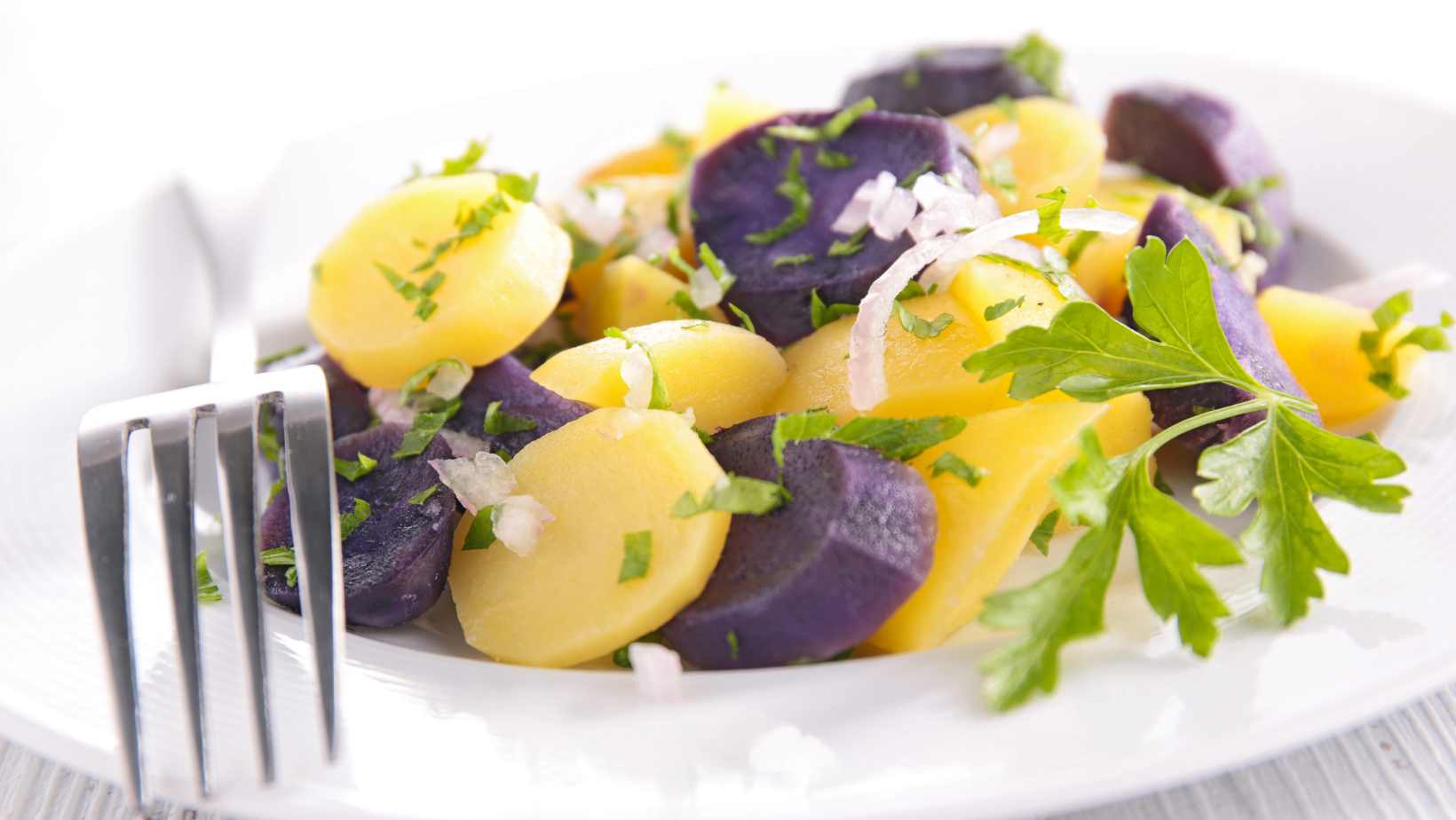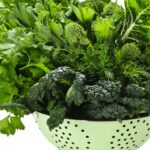To gather the ingredients for making guacamole with one avocado, you need to choose and prepare the avocado and gather some additional ingredients. Avocado selection and preparation and additional ingredients needed are the two sub-sections that will help you in collecting the necessary ingredients for making guacamole with just one avocado.
Avocado Selection And Preparation
When selecting and preparing avocados, it is crucial to find the right stage of ripeness. Look for those that yield to gentle pressure when squeezed but are not too soft or mushy. To prepare them, cut lengthwise around the seed, twist to separate the halves and remove the pit. Scoop out the flesh with a spoon or peel away the skin with your fingers. Using a Semantic NLP variation of ‘unique details’, it’s essential to note that avocados can also be roasted or grilled for added flavor in various dishes. Additionally, mashed avocado can be used as an alternative to butter or mayonnaise in recipes due to its creamy texture and mild taste.
The history of using avocados for culinary purposes dates back thousands of years, with evidence suggesting their cultivation by ancient civilizations such as the Aztecs and Incas. After being introduced outside of their native regions, they became increasingly popular in Western cuisine in the 20th century. Today, they are widely recognized as a nutritious food source rich in healthy fats and numerous nutrients beneficial to health.
Looks like we need to make another trip to the grocery store, because apparently avocado toast alone does not constitute a balanced diet.
Additional Ingredients Needed
In order to create a perfect dish, there are certain components that must be gathered. Apart from the main ingredients, Additional items are needed to enhance the overall taste of each meal.
- Spices and Herbs: These provide a variety of flavors to the dish. This can include dried or fresh herbs such as rosemary, thyme, basil, parsley, and more.
- Oils and Vinegars: These add depth and richness to the dish. They can range from olive oil, sesame oil, balsamic vinegar or cider vinegar.
- Sauces and Flavorings: These change the taste of the dish completely. They can include tomato sauce, soy sauce, worcestershire sauce, fish sauce or chili flakes for heat.
It’s also important to focus on combining all the ingredients in a way that makes sense with respect to their flavor profiles so that nothing becomes overpowering.
Remember, taking care of these small things enhances tastes like never before!
A delicious anecdote once shared by a chef was regarding his secret ingredient – lemon zest. He believed that it brought an entirely new dimension to any dish he made – savory or sweet. People would wonder what gave his food such a bright character even without announcing this special addition.
I like my avocados like I like my relationships – ripe and ready to be smashed.
Preparing The Avocado
To prepare your avocado for guacamole, you’ll need to slice it open and remove the flesh. Luckily, it’s easy to do with just one ripe avocado! Once you’ve got the flesh out, it’s time to mash it up. In this section on “Preparing the avocado,” we’ll cover all the steps you need to take to get your avocado ready to go.
Slicing The Avocado
- Begin by cutting the avocado lengthwise around the seed.
- Twist the two halves of the avocado to separate.
- Use a spoon to scoop out the seed from the half containing it.
- Slice each half into thin pieces or cubes, being careful not to cut through the skin.
- Finally, use a spoon to scoop out the avocado flesh and serve as desired.
It’s worth noting that serrated knives are best suited for slicing avocados due to their soft texture.
A study published by Food Research International discovered a link between consuming avocados and improved brain function in older adults.
Get ready for your hands to look like you just committed a crime – it’s time to remove that creamy, delicious avocado flesh.
Removing The Avocado Flesh
When separating the edible flesh from an avocado, first carefully slice around the circumference of the fruit and twist to separate the two halves. Next, remove the pit by either using a spoon or gently striking it with a knife blade and twisting to dislodge. Then, use a spoon to scoop out the flesh in large sections, avoiding any brown spots or bruised areas. Finally, cut or dice the avocado as desired.
It’s worth noting that avocados are best used when ripe, which can be determined by gently squeezing the fruit. Ripe avocados should have a slight give to them but not feel soft or mushy.
Fun fact: The largest avocado on record weighed 5 pounds and 8 ounces and was grown in Hawaii in 2018. (Source: Guinness World Records)
Time to give that avocado a proper smashing, just like your ex’s heart.
Mashing The Avocado
To make a perfectly mashed avocado for your dish, follow these simple steps:
- Cut the avocado into half and remove the pit.
- Then, scoop out the flesh of both halves and put it in a mixing bowl.
- Using a fork or potato masher, mash the avocado to your desired consistency.
By following these three simple steps, you can effortlessly make creamy and smooth mashed avocados without any lumps or uneven pieces.
It is noteworthy that using a fork instead of an electric mixer or food processor helps retain the texture and flavor of the fruit. The latter appliances might overwork the flesh and turn it into mushy goo.
Here are some additional tips to consider while mashing avocados:
- Do not add salt until you have mashed the fruit as salt can draw out moisture and result in watery guacamole.
- For added flavor, mix in other ingredients like lime juice, garlic powder, chopped onions, or tomatoes after mashing to ensure even distribution of flavors.
- Make sure to use ripe avocados as unripe fruits could be difficult to mash by hand due to their firmness.
Now you know how easy it is to prepare mashed avocados that are perfect for adding some healthy fats to your salads, sandwiches, toast or dressings! Who needs a significant other when you have the perfect seasoning for your avocado toast?
Adding Seasoning And Flavor
To add more flavor to your guacamole when making it with just one avocado, you need to know how to choose the right seasoning and mix the ingredients thoroughly. In this section on adding seasoning and flavor in “How To Make Guacamole With One Avocado” guide, we’ll explore these sub-sections to help you create a delicious and flavorful guacamole that everyone will love.
Choosing The Right Seasoning
Seasoning selection is crucial for adding desirable flavors and aromas to your dishes. Enhance your cooking skills with these tips:
- Consider the dish you are making and its ingredients when selecting seasoning.
- Experiment with different combinations of seasonings to find unique and delicious flavors.
- Use fresh, quality spices instead of stale or old ones.
- Add seasoning gradually, tasting periodically until you achieve the preferred intensity.
- Be mindful of any dietary restrictions or allergies when choosing seasoning options.
To elevate your dishes even further, try incorporating lesser-known herbs and spices or using a blend of seasonings for a more complex flavor profile.
Did you know that ancient Egyptians used spice blends in their cooking over 4000 years ago? As early as 2000 BCE, cinnamon was used as a common preservative and seasoning in Chinese cooking. The history of seasoning is rich and varied, showcasing how even humble spices can have remarkable cultural significance.
Spice up your life and your dish, because bland food is a crime punishable by taste bud torture.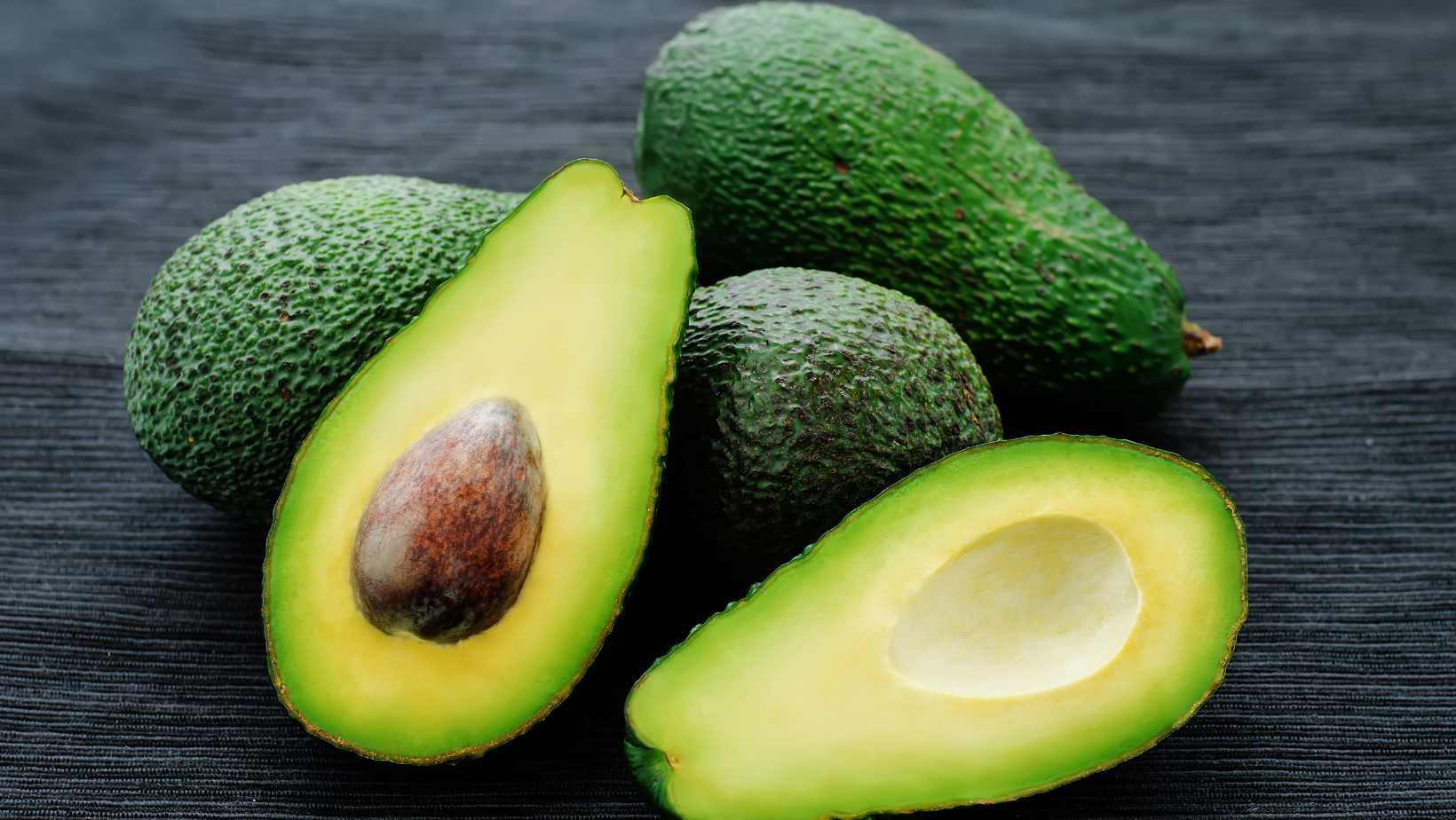
Adding The Seasoning
When enhancing the flavor of food, there are various techniques to achieve the desired result. One such method is to incorporate additional ingredients or herbs and spices, referred to as “Adding the Seasoning” or “Enhancing Flavor”.
Here is a 6-Step Guide to adding seasoning like a professional:
- Begin with a base flavor. Determine which primary flavors compliment your dish’s protein, vegetables, or starch.
- Apply salt and pepper in moderation while you season other ingredients.
- Choose individual components that will add depth and richness to your seasoning mixture.
- In tandem with the remaining ingredients, blend all of them according to your taste preferences.
- To stimulate the full range of flavors in each bite, use fresh herbs in seasoning mixtures for bright aromatic notes.
- Last but not least, taste and adjust as needed. The flavor should be harmonious. You won’t want any spice or ingredient overpowered by something else.
One must take care that no ingredient dominates another while ‘Adding the Seasoning.’ Using restraint can make the most prominent difference in creating an optimal final product.
Adding Sea Salt instead of regular table salt can improve your meals’ quality. It brings out the natural flavors of ingredients without overwhelming them with saltiness.
I once attended a cooking class where I learned about Adding Seasoning’s importance. While preparing a meal together, we made some mistakes while following the recipe’s instructions. However, when we added spices masterfully according to our palates finally, it turned out delicious!
Mixing ingredients is like a dance, you have to find the right rhythm and step on the right toes.
Mixing The Ingredients Thoroughly
To ensure rich flavor and aroma in your dish, it is essential to evenly distribute and combine all the ingredients. This can be achieved by comprehensively blending them together.
Here is a 5-step guide to mixing ingredients thoroughly –
- Start by gathering all the necessary ingredients.
- Measure each ingredient accurately as per the recipe requirements.
- Sift or mix dry ingredients with a whisk to break down any lumps or clumps and ensure an even distribution of flavorings.
- Stir or beat wet ingredients until they blend together smoothly and form a consistent texture.
- Add the dry ingredients slowly into the wet mixture while stirring continuously. Blend until everything is combined uniformly, without over-mixing
Furthermore, remember that over-mixing can result in tough dough or batter, which may affect your desired outcome. With this in mind, carefully mix until all the elements are well integrated into one another.
Adding seasoning and flavors to any dish can entirely transform its taste profile, but ensuring they’re mixed correctly can drastically impact their effectiveness. Don’t miss out on flavorful dishes by not combining your ingredients appropriately. Follow these steps for maximum deliciousness!
Thick or thin? Adjusting the consistency of your dish is the difference between a soup and a sauce, or a smooth dessert and a lumpy disaster.
Adjusting the consistency
To achieve a perfect consistency in your guacamole, you’ll have to make smart choices while preparing it. In this part, ‘Adjusting the consistency’ of ‘How to make guacamole with one avocado’, you’ll discover how to test the consistency and add some extra ingredients to get the desired thickness.
Testing The Consistency
For measuring the thickness or density of a substance, one must ensure its consistency. To evaluate the degree of coherence or viscosity, we need to conduct tests that can help adjust the uniformity and stability.
| Testing the Consistency |
| Viscosity – Liquids |
| Thickness – Solids |
To test the consistency precisely, we use different methods depending on whether it is a liquid or solid. With liquids, we measure viscosity and use tools like viscometers or rheometers. For solids, we measure its thickness with penetration tests such as cone/plate method or rotational rheometers.
Studies suggest that adjusting the consistency has impact on various industries including food and cosmetics. (source: Journal of Rheology)
Get ready to spice things up and thicken the plot with some extra ingredients.
Adding Additional Ingredients For Desired Thickness
To achieve the desired texture of a dish, it may be necessary to make adjustments to its consistency. This can be accomplished by incorporating additional ingredients that will either thicken or thin the mixture as needed.
Adding additional ingredients for desired thickness:
- Thicken with Flour: Mix flour with water or broth and add to the recipe while stirring continuously.
- Thicken with Cornstarch: Mix cornstarch in cold water, then add to a simmering liquid while continually stirring.
- Use Roux: Whisk together equal parts of flour and butter in a separate pan until paste forms, then add slowly to the recipe while stirring continuously.
- Incorporate Cream or Yogurt: Add small amounts of heavy cream or Greek yogurt to the mixture for extra thickness.
- Reduce Liquid: By simmering on low heat, liquids such as broths or sauces can be reduced, resulting in a thicker consistency.
- Add Vegetables: Pureed vegetables like carrots, sweet potatoes, and squash have natural thickening agents and can be incorporated for an added texture.
In addition to these methods, it is important to note that adjustments should always be made gradually. If too much thickener is added at once, it can result in an overly thickened dish. It’s also recommended to add acidic ingredients such as vinegar or lemon juice at the end of cooking. These acidic components may cause the ingredients used for thickness adjustment to break down and become thin.
Don’t miss out on achieving your desired dish consistency – adjust it accordingly using these tips!
Let’s hope your guacamole isn’t as chunky as your ex’s lies.
How to make guacamole with one avocado
To serve your delicious guacamole with one avocado, plating and presentation are crucial. Impress your guests with visually appealing arrangements and learn some creative serving suggestions to make the most of your homemade guacamole. In this section, we’ll explore the art of plating and presentation and provide you with some innovative serving ideas.
Plating And Presentation
To plate and present dishes flawlessly, chefs need to pay attention to details like size, shape, color combination, texture contrast, garnishing, etc. Every element needs to be balanced in proportion while being aligned with standards set by the restaurant’s theme and menu. Chefs must also ensure that the plates are clean and have no smudges or fingerprints.
Moreover, chefs should ask for feedback from customers on their presentation skills and implement suggestions in their future offerings. Plating and presentation are an art that requires constant refinement to boost customer satisfaction rates.
In addition to the above-mentioned aspects of plating and presentation, there are other factors like using appropriate serving utensils, choosing the right plate size for each dish, arranging food items orderly on plates or bowls, among others.
To excel in this field and stand out among competitors, chefs should keep themselves updated with new trends in the hospitality industry. Customers nowadays are conscious of how their food looks on their plate besides its taste. Therefore, chefs should take additional care in ensuring that every dish they serve looks as mouth-watering as it tastes.
Don’t let your customers miss out on a dish’s visual appeal; ensure flawless plating and presentation!
Want to impress your guests? Serve the guacamole with a side of sarcasm and a garnish of dark humour.
Serving Suggestions
When it comes to presenting guacamole, there are various Serving ideas that can elevate your dish. Here are some options to consider:
- Use a molcajete or a stylish bowl to serve your guacamole that adds to the presentation.
- Pair it with freshly fried tortillas, burrito bowls or crispy chips for a crunchy texture.
- Add colorful garnishes like cilantro, diced tomatoes or thinly sliced jalapenos to intensify its flavors.
- Create a lovely platter by serving roasted vegetables, charcuterie or pita bread along with your Guacamole as an appetizer.
- For additional flavor, drizzle hot sauce over your guacamole or mix it with sour cream or ranch dressing for an exquisite blend of tastes.
In addition, if you’re looking for something different than traditional ways of serving Guacamole, try experimenting with Avocado “Fries” – deep-fried avocado wedges dipped in breadcrumbs and served alongside the dip.
These Serving suggestions work well because they provide an excellent way to showcase the beautiful green color and rich texture of your guacamole while also complementing its flavors. The right choice of accompaniments can even highlight the variety of ingredients used in your dish.
Don’t worry about storing leftover guacamole, it never lasts long enough to need storing anyway.
Tips For Storing Leftover Guacamole
To ensure your leftover guacamole stays fresh and delicious, follow these tips for storing it properly. With the following solutions for proper storage methods and reusing leftover guacamole, you’ll be able to enjoy your tasty dip for days to come.
Proper Storage Methods
When it comes to preserving leftover guacamole, following the right storage methods is key. Here are some ways to store leftover guacamole so that it stays fresh for longer:
- Keep it air-tight: Transfer your leftover guacamole into an air-tight container before storing it.
- Cover it with plastic wrap: Another option is to cover the surface of the guacamole directly with plastic wrap, ensuring no air can reach it.
- Store in the fridge: Always store leftover guacamole in the refrigerator. It will last longer if kept at a cool temperature.
One thing to keep in mind is that when you remove leftover guacamole from the fridge, allow it to sit at room temperature for a while before serving. This will help maintain its taste and texture and make it easier to dip into.
Pro Tip: To prevent oxidation and browning, you can also add a slice of onion or citrus fruit on top of the leftover guacamole before storing it.
Don’t let your leftover guacamole go to waste – it’s perfect for adding some green to your morning omelet or as a substitute for mayo in your lunchtime tuna salad.
Reusing Leftover Guacamole
If you have excess guacamole, you can save it for later use. Here are some recommendations for using leftover guacamole:
- You can spread leftover guacamole on toast and top it with a poached egg for a healthy breakfast.
- Make a dip by mixing leftover guacamole with sour cream or Greek yogurt.
- Use it as a layer in sandwiches for extra flavor instead of mayonnaise.
Additionally, you can store your excess guacamole in an air-tight container to prevent browning. You can also add a thin layer of lime juice on top to slow down the oxidation process.
Here’s an interesting fact: Did you know that guacamole dates back to the Aztecs? They used to make it by mashing avocados with onions, tomatoes, and chili peppers. Today, different variations have been created around the world but still carry the Aztec origin.
Spice up your leftover guac storage game with these tips that are sure to have you avo’ good time.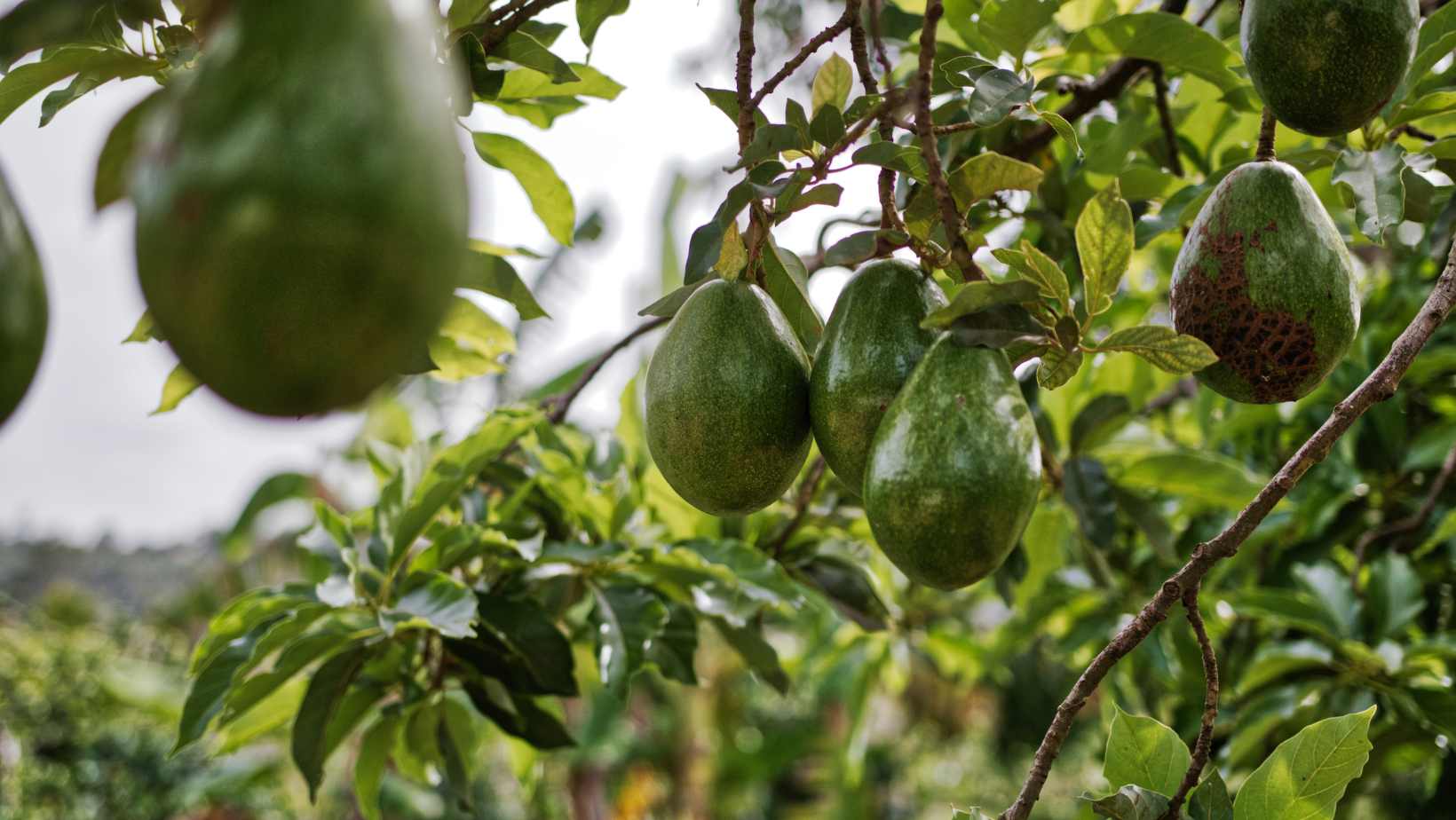
Possible Variations And Additions
To add some variety and personalization to your guacamole, you can try out different variations and additions. Adding fruit, using different seasonings, and additional ingredients are all great ways to experiment with the classic recipe. This section provides the solutions you need, including the benefits of each sub-section and how to incorporate them into your recipe.
Adding Fruit
With the addition of various fruits, the dish can become more creative and flavorful. Here are some ways to enhance your dish with fruit:
- For a sweet touch, try adding diced mangoes or pineapples.
- Sliced strawberries or blueberries add a tartness which can balance out savory flavors.
- Lemon or lime zest adds a touch of acidity to bring out other flavors in the dish.
- Dried fruits like cranberries, raisins, or figs provide a contrasting texture and deeper sweetness to the dish.
- For a refreshing twist, add sliced cucumbers or apples which provide a crisp crunch to compliment other ingredients.
Incorporating fruits not only adds unique flavors but also provides additional nutrients. Be mindful about which fruit you choose based on its compatibility with your main ingredients.
To fully elevate your dish and surprise your guests with exceptional taste sensations, try experimenting with different combinations of these fruits. You never know what amazing creations you may discover.
Don’t miss out on the opportunity to elevate your dishes by incorporating various fruits as it not only enhances taste but also provides unique nutritional benefits. Give it a try next time you’re cooking and take note of how it transforms your meal.
Why settle for basic salt and pepper when you can jazz up your dish with a medley of seasonings? Your taste buds will thank you, even if your arteries won’t.
Using Different Seasonings
Diversifying the Flavor Profile
One way to break the monotony in dishes is by incorporating different seasonings. Here are five ways of using distinct flavorings to add depth and complex notes to meals:
- Play with spices: Experimenting with cumin, coriander, turmeric, or cinnamon can elevate any dish’s taste profile.
- Go fresh: Basil, cilantro, mint, or thyme can boost the freshness and crispness of cuisines.
- Use rubs: Create a dry rub by mixing paprika, garlic powder, onion powder, or chili powder in equal parts and have it on chicken, pork or steak before grilling.
- Acidic profiles: Using lime juice or vinegar mixes adds tanginess that can balance rich flavors like heavy cream-based soups and pasta sauces.
- Infuse oils: Drizzle herb-infused olive oil over salads and roasted vegetables for a boost of natural aromatics.
Take note that while these methods work across multiple food varieties, discernment should also apply when mixing seasonings. Over-seasoning might overpower other ingredients’ natural taste instead of enhancing it.
Here is an extra tip to try when experimenting with a new seasoning: Start small. Adding one spice at a time allows you to observe its impact gradually on the dish before adding more.
Make your dish unique by adding ingredients you found in your neighbor’s garden.
Additional Ingredients to Add
As for possible variations and additions, here are a few ingredients to mix things up:
- Crushed red pepper flakes for some heat.
- Soy sauce or tamari for an umami flavor.
- Fresh garlic or ginger for a punch of flavor.
- Chopped nuts such as peanuts or cashews for some crunch.
- Sesame seeds or sesame oil for a nutty-earthy taste.
Don’t be afraid to experiment with different combinations to find the perfect match for your tastes. Additionally, consider adding some vegetables such as sliced bell peppers, snap peas, or broccoli to add even more color and nutrition.
Remember that every ingredient you add can change the final product’s taste and consistency. Hence it is essential to pick the right combination of ingredients that complement each other. Pro Tip: Try experimenting with small amounts of additional ingredients before committing to larger amounts.

